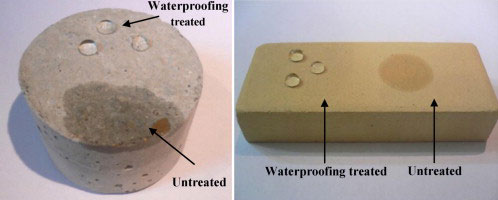| Mar 29, 2013 |
Using nanotechnology for waterproofing building materials
|
|
(Nanowerk News) Researchers waterproofed building materials with very high efficiency by using a green and noncorrosive heteropoly acid catalyst ("Synthesis of a nano organo-silicon compound for building materials waterproofing, using heteropolyacids as a green and eco-friendly catalyst").
|
 |
| Keggin and Preyssler heteropolyacids as non-corrosive, stable, non-toxic and environmentally friendly catalysts were used in the synthesis of a nano organo-silicon material with the mean size of 60–70 nm for waterproofing of building materials. The standard tests confirmed the excellent waterproofing activity of the prepared nano material for the brick, concrete and stone. (© Elsevier)
|
|
They used a specific type of organosilicon polymer at nanometric dimensions in this research as the waterproof coating, and they calculated the optimized conditions of the process by designing an experiment through the sol-gel method.
|
|
In addition to avoiding water and decreasing the pollution to its minimum level, the building coatings produced in this research strengthen the building façade against UV, and they can be used in the interior and exterior parts of the building due to their invisibility.
|
|
Various materials can be protected against water by using the results of the research including concrete, cement, cement blocks, roof cement plates, mortar, mosaic, various types of natural and artificial stones, soil, slurry, brick, tile, and clay stuff. It is also an effective step towards the protection and conservation of the newly built buildings.
|

